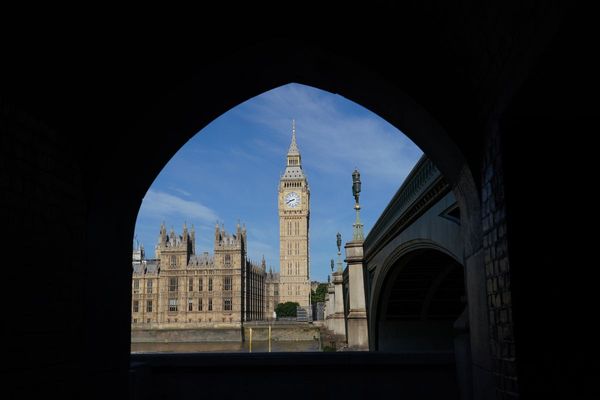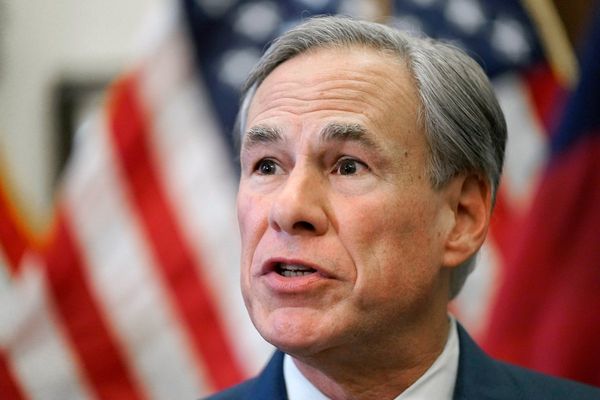
You may not need to be a trend-forecaster to know this but “2023 is going to be a bad year”. So says Sean Monahan, who writes the substack 8Ball, and last year correctly predicted the “vibe shift” popularized in a widely shared essay in the Cut by Allison P Davis.
“It’s hard for me to predict or have a strong intuition on 2023, because the economy is behaving very strangely now,” Monahan tells the Guardian.
Still, some trends are already coming into view. Enjoy the Sam Bankman-Fried crypto drama while you still can, because scammers are out, he says. Tech is no longer “the last good career”. Music faces a grim future, too. And don’t be surprised if 2023 finds you seeing a show or partying in a converted office space.
What do you think we’ll leave behind in 2023?
One thing I’ve been making jokes about is how this is the end of zero-interest-rate culture. It’s been called the millennial lifestyle subsidy: things like Uber, Airbnb or delivery services were cheap and priced below what it costs to deliver that service, because there were low, low interest rates through the 2010s. As that changes, we’re going to see some of the shifts in the kinds of businesses that people build.
I can already tell that it’s going to be much harder to be a grifter in 2023 than it was in 2019. Five years ago, you could see people getting a lot of funding, and it was hard to understand where they got that money. They clearly had no business experience, no tech competency and no capacity to build any products.
There’s a reason we had so many con artists and grifters in the past decade: there was more money searching for a place to make a profit. That’s going away, and I think that’s a good thing. There was this millennial idea that tech was the last good career, and that seems over. From a cultural standpoint, it has no aura.
Who’s due for a comeback this year?
Lindsay Lohan, but that’s kind of in the works. Cobrasnake had his comeback, and so did the Strokes. Abercrombie has had a slow-boil comeback. I think people want the old Abercrombie. There was that documentary on Netflix, which laid bare all of their terrible and racist business practices.

Despite the brand’s moral misgivings, the branding was very strong and on-point, all that Bruce Weber photography, homoeroticism, and relaxed north-eastern vibes. I see people wearing those old Abercrombie and Fitch briefs with the band of underwear just peeking out above jeans, so that people can see it.
What did you make of Balenciaga’s recent campaign, featuring teddy bears in bondage gear and papers on child abuse law? It was supposed to be edgy or subversive, but it just ended up playing into QAnon’s hand.
Maybe there are certain things where your ironic humor will get you into trouble, and Balenciaga certainly discovered a third rail here. Edginess is not going to go away; I think smaller brands will still do it. I don’t know if major brands will. I think Balenciaga’s biggest problem over the last couple of years is being too dominant for too long. Fashion is a system that relies on novelty and overturning the people who run the scoreboard.
I think there’s a desire to reappoint Celine as the cool kid brand over Balenciaga. And that goes back to the 2010s: the rise of Celine happened then. So again, it’s cool kids who are looking just beyond the horizon of what everyone else is into. Indie sleaze came back during the pandemic, but now you see people who are peeking over the horizon of late hipster-dom and are going to revise minimalism.

You think minimalism is coming back after a year of over-the-top dopamine dressing?
I don’t think it will come back immediately. The whole last decade was so minimalist. And it can be a problem for fashion: if brands become so minimalist, it’s hard to distinguish one from the other.
When I think of minimalism, I think of the new aesthetic in tech products. Everything looks the same, and it has for a while. So there’s a burnout with minimalism. Everyone has the same phone. But suddenly we see young people going out and buying digital cameras when they already have their iPhones. They don’t want all of their photos to look the same. There’s a boredom in that.
What else do you think we’ll be wearing in 2023?
Some people have been asking about the return of normcore. And here’s the thing: millennials are becoming yuppies. They’ve grown up, and that’s part of what the vibe shift is. The original normcore dynamic was interesting, not necessarily because of the styles, but because of who was wearing it. There was something ironic, and maybe somewhat infuriating, to have cool downtown kids dressed like suburban moms. I don’t know if it’s as interesting to have suburban moms dressed as suburban moms. There certainly seems to be a rise of the preppy aesthetic, which seems like it will keep chugging upwards.
Gen Z and millennials showed up en masse to go vote in the midterms. How do you think people will engage with politics this year?
There’s an exhaustion with politics, especially the hyper-politicization of social media. We’re all exhausted with what the late 2010s were like. And I think we’ll see an avoidance of political conflict online. Voting is different – that’s a tried-and-true method of political engagement. But the social justice movements of 2020 have been fully integrated in corporate marketing. Those things no longer feel punk or avant-garde because you see them in ads for soap.
Arguing with people on the internet about the fact that you don’t agree with them feels over. Or at least it feels like old people’s behavior. A good parallel would be why millennials stopped using Facebook around the 2016 election, because they didn’t want to keep fighting with family members about Trump. Facebook has become one-note in that way. So people migrated to Instagram, but now Instagram has the same dynamic that people increasingly want to avoid. Making a political slideshow on Instagram is something I can only see a millennial doing.
Why is 2000s nostalgia still so attractive right now?
Well, periods of nostalgia are always reinterpretations of the periods they’re pointing towards. When I was young in the early 2000s, there was a lot of 80s nostalgia. And people who see themselves as avant-garde will kind of nudge up the nostalgia a little bit, to seem more original. You have kids now who say: “Oh no, I’m not interested in the mid-aughts, I’m interested in 2012.” But generally, I think it’s because when you have young people looking at parties from that era, they seem to be a lot wilder. And they were.

When I moved to New York in 2010, there were still abandoned industrial spaces in north Brooklyn. People were having parties there; it was the outgrowth of the early 2000s DIY movement and the accessibility of live/work studios. Now, it’s very hard to find a cheap live/work studio if you’re an underemployed 23-year-old. The amount of space that young people have available to themselves to socialize in is a lot lower. And that’s never going to come back.
Where will young people gather and socialize if they’ve been priced out of most cities?
One thought is that maybe with the rise of remote work, that office space could be converted into clubs. But the arc of these cities like New York or London having industrial spaces kids can convert into housing, clubs, and art studios really isn’t coming back. And I don’t think people are as comfortable with teenagers having independent spaces any more. Your parents couldn’t put a tracker on your cellphone in 2003, but they can now.
Still, people want to gather, and there are hard limits to what the digital socialization and communities we saw during lockdowns can achieve without an IRL component. Socialization has been made much more expensive, especially, again, compared to a decade ago when you could get $2 PBRs as opposed to a $30 martini. People are trying to find whatever way they can around that. Maybe video games, or spaces like Twitch, could become a substitution.

Music is going to have a hard time this year. The cheap, dingy venues are gone, so young people use video games as a social space. It’s like a phone call, but you’re also doing an activity together.
What do you mean when you say that music is going to have a hard time this year?
I don’t want to imply that people will stop making music and music scenes, but we have a shift where people are listening to more catalogue music than new music. Music used to be something that was relatively specialized, and part of the reason why people were interested in scenes was that it was something other people didn’t know about and it made them special. It doesn’t feel quite as special when Spotify and Apple Music are curating everything you’re listening to. It’s all about algorithmic recommendations, as opposed to a friend sending you something or you getting invited into a space. That’s made music feel much less special.







